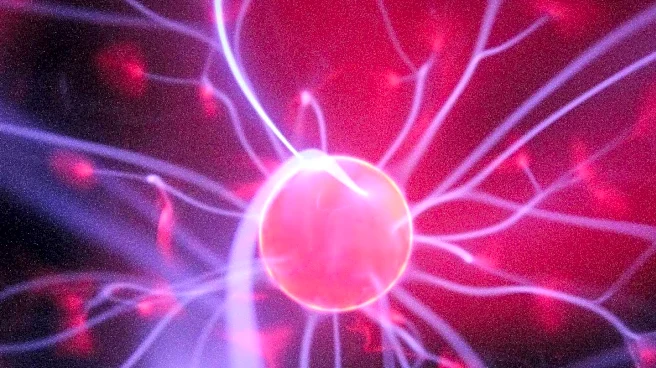What's Happening?
Recent research using SAPAP3 knockout mice has provided new insights into the brain mechanisms underlying trichotillomania, a compulsive hair-pulling disorder. The study found that these mice exhibited behaviors similar to human trichotillomania, such as compulsive grooming, heightened aggression, and stress-sensitive behaviors, particularly in females. Neural recordings revealed reduced activity in the nucleus accumbens, a region associated with reward and habit control, alongside dopamine receptor imbalances and altered synaptic protein interactions. These findings suggest that targeting reward circuit function and dopamine pathways could lead to new therapeutic approaches for managing compulsive hair-pulling.
Why It's Important?
Understanding the neurobiology of trichotillomania is crucial for developing effective treatments, as current pharmacological options are limited. The study highlights the role of dopamine signaling and reward circuit dysfunction in driving compulsive behaviors, which could inform targeted therapies. Additionally, the research points to potential sex-specific vulnerabilities, with female mice showing more pronounced symptoms, echoing clinical observations. This could lead to more personalized treatment strategies. The findings also raise questions about the therapeutic potential of modulating oxytocin pathways, which showed complex effects on grooming and aggression in the study.
What's Next?
Future research may focus on developing treatments that balance dopamine pathways or modulate oxytocin signaling to reduce compulsive hair-pulling. The study's limitations, such as small sample sizes and male-skewed molecular analyses, suggest the need for further investigation. Chronic treatment studies and sex-stratified analyses could provide deeper insights into the disorder's neurobiology and inform more effective interventions. Researchers may also explore the functional role of SAPAP3-SHANK3 coupling and its impact on synaptic stability, which could be crucial for understanding and treating trichotillomania.
Beyond the Headlines
The study's findings could have broader implications for understanding obsessive-compulsive spectrum disorders, as they build on previous research linking basal ganglia dysfunction to compulsive grooming. The complex role of oxytocin in modulating social behavior and anxiety highlights the hormone's context-dependent influence on brain circuits, which could be relevant for other psychiatric conditions. Additionally, the research underscores the importance of considering sex-specific factors in mental health studies, which could lead to more equitable and effective treatment approaches.











